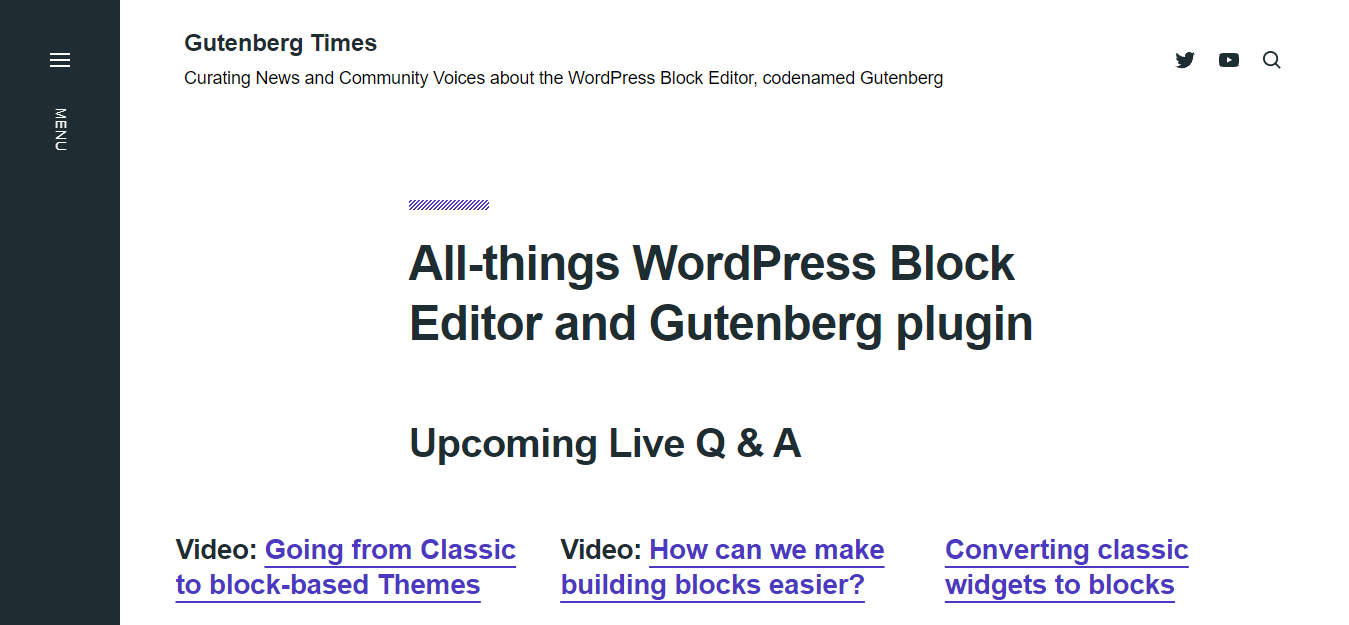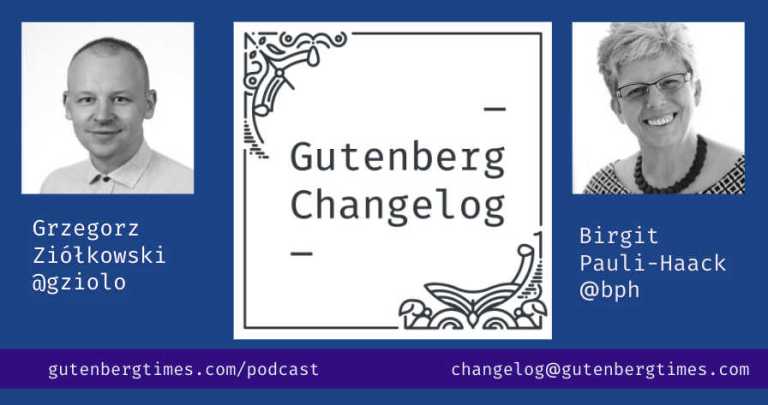Todd Jones
Along with being the resident writer for MainWP and content hacker at Copyflight, I specialize in writing about startups, entrepreneurs, social media, WordPress and inbound marketing topics.

When Gutenberg started being a story in the WordPress community, I went searching for resources.
One that I found early on was Gutenberg Times (GT).
I found out that the person who ran GT was Birgit Pauli-Haack, and over time I struck up a conversation with her via Twitter DMs.
She was very nice and very accommodating for any questions I had.
Over time I have found her to be a rock in the WordPress space with lots of expertise, credibility, and a great human being.
Today, I have the honor of publishing a Q&A article with Birgit asking questions about WordPress, Gutenberg, and Women in WordPress.
In 2009, I became the volunteer president of the local Freenet. At that time, we provided a hideously outdated, homegrown CMS to nonprofit organizations, and we needed badly to review that offering.
We looked at about 30 CMSs available and WordPress — by far — was the best for our needs as a volunteer tech team and the non-profit’s staff and volunteers.
It was the most astonishing transition phase to watch when we migrated about 40 sites to WordPress the next summer. The techies went away, and the communicators came in and embraced that they can update content without having to beg a techie to make the changes. It felt quite liberating to them, and they became increasingly creative in their online communication.
“The techies went away, and the communicators came in and embraced that they can update content without having to beg a techie to make the changes.” Birgit
After that success, our agency team also embraced WordPress and has been using it ever since.

Well, the transformation of content creators I saw in 2010, helped me recognize how important the block editor will be for content creators in the next decade, and how it will enrich their work and change how we will build websites. I was enthralled by the possibilities when I saw the first demo video in 2017 at WordCamp Europe.
I love the modern interface, the immediate editing toolbar, the way content can be moved up and down the page, the much richer features set for various content types, and the speed.
Of course, I also realized it was very much in beta, but I got the idea, and I knew, give it time, it will be outstanding.
I’m not quite sure what exactly triggered it. For five years, I was a deputy on the Global Community team and helped Meetup and WordCamp organizers to create their wonderful events.
Of course, we had discussions on how to make more women and members of other minorities feel comfortable to come to the events and to present.
One of the reasons that came up often enough was that the organizers didn’t know any developer women.
Then I heard the same excuse when I saw writers putting lists together with people to follow on WordPress Twitter, 15 men, and a token woman. At one point I must have been a bit mad and channeled the energy into putting all the WordPress women I knew in a list.
Now I had a place to point people to and see women in WordPress. It started out as a small list of about 100 women, and since then, I added women, whenever I came across them on Twitter, I double-check that I had them on the list and added them if not.
The list has grown to over 460 Women, and the most astonishing is also that there are almost 200 people following that list.
2020 was a hard year for so many of us. I actually felt blessed, that we, my husband and me, enjoy each other’s company throughout the day, and we self-isolated pretty well. Business-wise, it also started out as a blessing. By the end of January 2020, we already had 50% of the revenue of the previous year under contract.
By April, it has grown to 100%. We had to stop signing on new clients in May 2020. We had an outstanding year, but by November I felt it. It was too much. The web had lost its wonder for me and with that, I lost the drive to push through deadlines, meetings, code, etc. That continued until May of this year when I came across a job offer as a Developer Advocate for the (WordPress).org division at Automattic.
I sent in my application, and the more I thought about it, the further along I progressed in the application process, it felt like it could become reality.
Turns out I have been doing Developer Advocacy for Gutenberg for the last four years. And I am so grateful to Automattic to offer me the position.
Now I am in the process to phase out all client work to agency friends in the WordPress community, or team members. I know they will take good care of the projects.
This is exhilarating! 🚀
Today I started as developer advocate at @Automattic. Automattic also sponsors the Gutenberg Times and the Changelog Podcast.To be part of the WordPress developer relations team feels like coming home to me with so many friends as co-workers! 1/2
— Birgit Pauli-Haack – next #WCEU (@bph) August 30, 2021
From June 2017 (WordCamp Europe) to December 2017, I was curating updates, stories tweets, and plugins via Storify and posting weekly links to updates to Twitter. By the end of 2017, I had some interesting conversations with team members of the development and design team. I received multiple requests for a newsletter.
Then Adobe, owner of Storify announced the end of life of the tool for the following year. Over the holidays in 2017/2018 I started working on the website and migrated all information from Storify into the Gutenberg Times blog.
With some very generous start-up sponsorship from Pantheon, I got it off the ground.
Back in 2018, I wouldn’t have thought about what Gutenberg Times could become. Friends would say, something like, once the editor is in the core, your site will be obsolete. Of course, traffic slowed down, but the conversations grew. There were always new features built, new ideas in the community, new plugins, and other implementations to check out.
A big part of the community also was very vocal in their opposition, Gutenberg Times inadvertently was one of the few positive voices. An oasis for users, who wanted to learn more about the bock editor, had a place to go and get their questions answered.
The beauty is when you focus on one very narrow topic, you learn a ton. I met astonishing innovators, brilliant designers, and project managers on the WordPress project.
Even during the burn-out phase from agency work, I got energized, when reading and writing about the block editor.
Nothing has held my attention in the last three years like the Gutenberg plugin releases and the creativity in the WordPress community around it.

Well, I am a process person, so I streamline administration. I have two daily/weekly tasks, that habitually keep me on top of the news: I am the page owner for the Keeping Up with Gutenberg Index page on the WordPress Core Handbook. It’s a list of all posts of all teams working on the block editor in chronological order. It’s very helpful when you want to catch up on several weeks of Gutenberg development or in my case when I am looking for specific posts.
The other almost daily habit is the build and distribution of the Gutenberg Nightly, a version of the plugin release from the trunk branch of the Gutenberg repo. It already has yesterday’s update, and you don’t have to wait for a release to test a feature, you are interested in.
Once you download a version from Gutenberg Times and add the GitUpdater plugin, you can get the daily updates right into your WPAdmin screen of plugins. No built step, no download of Gigabytes of files, and not installing NodeJS.
It is just another niche product, but it has about 86,000 downloads. I could not have pulled that off, without Andy Fragen, who worked with me through the process to make the update of the plugin seamless and as low-tech as possible.
It took me a while to settle on a format for the Live Q & As, a panel with three quests, and lots of audience participation. How does the saying go, before you make a good video, you have to make lots of bad ones?
It has been a great joy having all the innovators and WordPress community members as guests to discuss, Gutenberg adoption, see what’s coming next.
I also rely on a great team, especially our podcast producer, Sandy Reed, who used to work for a local Radio station as a show producer. She is wonderful!
I also am truly grateful for the two co-hosts, Mark Uraine for the first 40 episodes and Grzegorz Ziolkowski since then. It’s a tremendous joy talking through many of the Gutenberg changes that don’t make it into headlines.
If you sum it all up, it’s quite a lot, it grew organically, and I cherish our readers, listeners, and viewers.

It’s alright to wait. Not every project can be migrated easily to the block editor. I also want to stress you don’t have to learn ReactJS to open up your classic themes to the block editor and gradually adopt.
At our agency, we started building new sites with the block editor in mind in the Summer of 2018. Now that was a bit early, indeed. We had to tweak the theme, and the CSS, probably every other week. It was not too hard on the client because we were also helping them with getting new content and we funded the programming work to get two plugins Gutenberg ready. In total, it wasn’t more expensive to the client than the old way and a huge learning experience for our team. We only did three things, none of which required any heavy lifting from developers.
We made sure all blocks display well with the theme, we used Genesis themes a lot. We have a test post with many blocks in various variations, that we load in any project and review the theme’s styles, and if necessary we tweaked the styles.
Likewise, we made it exciting for the content creators to let them use the color choices for backgrounds and text but restricted them to the brand colors from their style guides.
Furthermore, we used the early adopter plugins to augment the available core blocks with a few more sophisticated ones. (Atomic Blocks, and Coblocks)
That’s Step One of Block editor adoption when working on a new site.
We also handled sites, that will take another two to three years to migrate slowly to the block editor. There might be budgetary concerns that take 12 months to work out, there are new features that need to be built first. Some project managers told me: “Don’t wait, just enable it. Our content creators will handle it and I will contact you when we get into trouble.”
Victor Ramirez, a regular WordPress Speaker and developer lead at an agency, and I had a longer discussion about various adoption levels. With each level, the complexity and skills necessary increase. Only for level four, you actually needed stronger programming skills and create custom blocks, but even then you can use ACFBlocks or similar other tools to create those blocks.

The discussion took place about a year ago, and you can watch a recording, read through the transcript, and follow the resources in this article: “Customizing WordPress Block Editor for Client Projects”.
Anne McCarthy, also developer advocate and program manager of the Full-site Editing outreach program, published a similar way to progressively disclose complexity in her blog post Sharing Approached for Full-Site Editing Adoption.
I recently updated the resources for a presentation at the Page Builder Summit next week. Once the Summit is over, I’ll publish it in the Gutenberg Times as well. If you subscribe to our eNews (weekly) You’ll learn when it’s available on the site. You will also be the first to know about the upcoming Live Q & As.
I want to thank Birgit for taking the time to answer the questions for the MainWP blog.
She is very thorough.
If you are interested in learning more about Gutenberg, check out Gutenberg Times where you can learn much more about the editor.
Manage Unlimited WordPress Sites from One Dashboard!